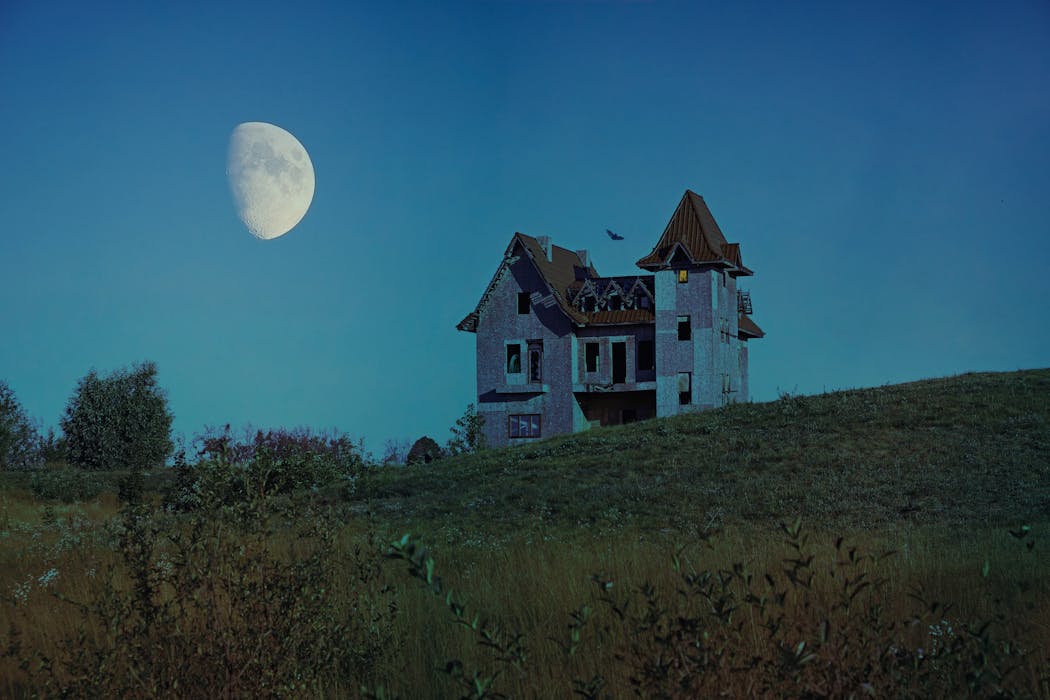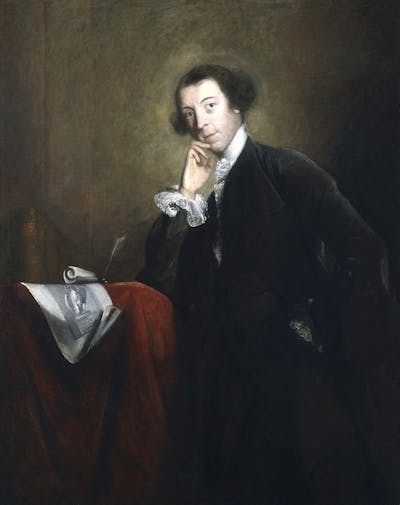
A door creaks shut, unexpectedly; a footstep is heard on the stair; a face seen at the window. The haunted house is a staple of gothic writing, television and film, but what is it about this humble setting that holds such a fascination?
For many, it is the sense of the unheimlich or the uncanny – the homely and the strange brought into contact. The home, we would like to think, should be a place of safety, of sanctuary from the world and domestic harmony. When this space is made strange, made unfamiliar somehow, terror ensues.
A ghost is there to tell a story – often of an event or past grievance that ties that story to place or person, where the past breaks in to disrupt the present and this sense of home. Sources as old as Pliny the Younger, the ancient Roman lawyer and writer, tell stories of houses that are haunted.

Gothic writing of the 18th century in Britain began with the castle as house. Castles were dual spaces, both domestic home and political centre, and in these spaces, like the one at the centre of Horace Walpole’s The Castle of Otranto (1764), ghosts represented family feuds, the restoration of inheritance and moral retribution.
Later, in the 19th century, the taste in gothic moves closer to the everyday. The questions of truth and narrative reliability became significant, with Victorian novels set in more regular homesteads.
During the Victorian age, the ghost story gained popularity through short stories in the periodical press. Charles Dickens went so far as to create a collaborative series of ghost stories in the Christmas edition of his magazine All the Year Round, all set in different rooms of the same haunted house. Contributors included Elizabeth Gaskell and Wilkie Collins.
Haunted houses frequently play on the tension between inside and outside. Ghosts, such as the mysterious children in M. R. James’s Lost Hearts (1895) come from within the house, arising from traumatic events that took place there. The ghosts seen by the governess at Bly Manor, in Henry James’s classic The Turn of the Screw (1898), are intrusive figures, seen first from a distance then encroaching more and more on the domestic space, as the governess attempts to shield her young charges from their influence. Anxieties about the home as private space, and as protection, are rife in these stories.
The haunted house, however, is also associated with confinement, often reflecting the entrapment of women, particularly, within the domestic space. Emma Liggins, gothic scholar at Manchester Metropolitan University, suggests in her book The Haunted House in Women’s Ghost Stories that the ghost story “transforms domestic space into a place of terror that threatens marital relations and women’s lives and sanity”.
The move into the 20th century did nothing to exorcise these ghosts. If anything, they became more pervasive as modern life and historical buildings clashed.
The birth of modernism and the onset of cinema in western culture saw new opportunities in writing and visual media for the representation of the haunted house, and whole series like The Amityville Horror (1797 then 1977), use the house as a framework.
Visual media allows for further play with the sense of the inside and outside, and the questions of narrative truth explored in earlier fiction. The BBC’s famous paranormal drama Ghostwatch (1992), brought its viewers into a supposed televised household haunting, blurring fact and fiction to draw in the audience. Presented as “documentary”, the show faked interruption itself by supernatural forces as the ghost, Pipes, appeared to interfere with camera equipment, fooling – and terrifying – many a TV viewer.
In some cases of haunting, ghosts are not the only threat; the house itself may be the supernatural force at work. Shirley Jackson’s Hill House, from her 1959 novel The Haunting of Hill House is famed less for those ghosts who dwell within it as for its own ghostly malevolence: “the face of Hill House seemed awake, with a watchfulness from the blank windows and a touch of glee in the eyebrow of a cornice”.
The house may also, of course, be a metaphor for the mind, a popular idea in Freudian readings of the gothic, which consider texts in relation to the unconscious. Here, the uncanniness of the haunted house may reflect precisely the way in which we are strangers to ourselves, with secret rooms, passages and the ghosts within forming a neat analogy for the mysterious and unknowable nature of the human mind.
In the end, houses in fiction and film may be cleansed of their ghosts, and frequently are, yet this is not always the case. Haunted houses such as Walpole’s Otranto and Edgar Allan Poe’s House of Usher (from The Fall of the House of Usher, 1839), dispossessed of their ghosts, fall in and collapse. But at the close of Shirley Jackson’s story, Hill House still “stood against its hills”, having (spoiler alert!) taken the life of the protagonist, Eleanor.
For the most part, buildings outlast the human, and the haunted house reminds us of this, that something we may think we possess – our very own “home”, or our mind – has an existence before and beyond us.
What’s your favourite haunted house story? Let us know in the comments below.
Looking for something good? Cut through the noise with a carefully curated selection of the latest releases, live events and exhibitions, straight to your inbox every fortnight, on Fridays. Sign up here.
This article features references to books that have been included for editorial reasons, and may contain links to bookshop.org. If you click on one of the links and go on to buy something from bookshop.org The Conversation UK may earn a commission.
This article is republished from The Conversation, a nonprofit, independent news organization bringing you facts and trustworthy analysis to help you make sense of our complex world. It was written by: Nicola Bowring, Nottingham Trent University
Read more:
- Why we keep hunting ghosts – and what it says about us
- Ghosts: the uncanny similarity between the BBC comedy and a ‘real’ Victorian haunted house
- The book that haunts me – seven experts on the scariest thing they’ve ever read
Nicola Bowring does not work for, consult, own shares in or receive funding from any company or organisation that would benefit from this article, and has disclosed no relevant affiliations beyond their academic appointment.


 The Conversation
The Conversation
 Vogue
Vogue VARIETY Film
VARIETY Film Brooklyn Paper
Brooklyn Paper Nola Sports
Nola Sports FOX News Videos
FOX News Videos Atlanta Black Star Entertainment
Atlanta Black Star Entertainment AlterNet
AlterNet America News
America News